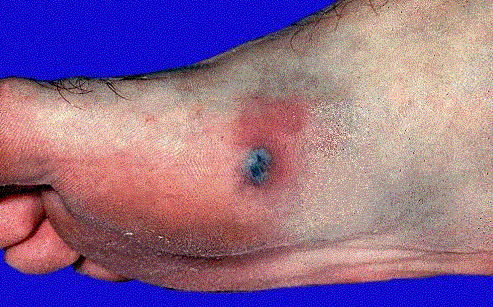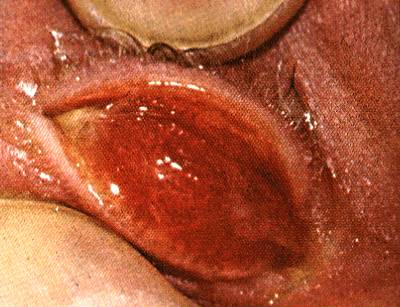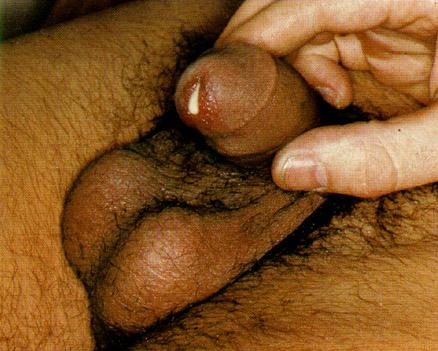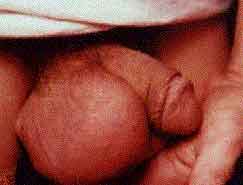Gonorrhea history and symptoms: Difference between revisions
| Line 11: | Line 11: | ||
* Past history of similar symptoms or STDs in patient, current or past partners | * Past history of similar symptoms or STDs in patient, current or past partners | ||
* Type of contraception used | * Type of contraception used | ||
* History of sexual assault | |||
* History of sexual assault | |||
* Reproductive history (details of parity, including any history of ectopic pregnancies) | * Reproductive history (details of parity, including any history of ectopic pregnancies) | ||
Revision as of 20:46, 21 September 2016
|
Gonorrhea Microchapters |
|
Diagnosis |
|
Treatment |
|
Case Studies |
|
Gonorrhea history and symptoms On the Web |
|
American Roentgen Ray Society Images of Gonorrhea history and symptoms |
|
Risk calculators and risk factors for Gonorrhea history and symptoms |
Editor-In-Chief: C. Michael Gibson, M.S., M.D. [1];Associate Editor(s)-in-Chief: Priyamvada Singh, MBBS [2]
Overview
Half of women with gonorrhea are asymptomatic while others have vaginal discharge, lower abdominal pain or pain with intercourse. Most men who are infected have symptoms such as urethritis associated with burning with urination and discharge from the penis. Either sex may also acquire gonorrhea of the throat from performing oral sex on an infected partner, usually a male partner. Such infection is asymptomatic in 90% of cases, and produces a sore throat in the remaining 10%. The incubation period is 2 to 14 days with most of these symptoms occurring between 4–6 days after being infected. Rarely, gonorrhea may cause skin legions and joint infection (pain and swelling in the joints) after traveling through the blood stream. Very rarely it may settle in the heart causing endocarditis or in the spinal column causing meningitis (both are more likely among individuals with suppressed immune systems.
History and Symptoms
History
In patients with suspected sexually transmitted diseases the following history should be sought:
- Past history of similar symptoms or STDs in patient, current or past partners
- Type of contraception used
- History of sexual assault
- Reproductive history (details of parity, including any history of ectopic pregnancies)
Symptoms
- The incubation time varies from 2 to 14 days with most symptoms occurring between days 2 and 5 after being infected from an infected partner.
- A small number of people may be asymptomatic for up to a year. They may be completely unaware that they have caught the disease, and therefore do not seek treatment. This increases the risk of complications and the chances of passing the infection on to another person.
- Between 30–60% of women with gonorrhea are asymptomatic or have subclinical disease.[1]
| Type of Gonococcal Infection | Symptoms |
|---|---|
| Male Genitourinary | |
| Female Genitourinary |
|
| Gonococcal proctitis (Rectal) | |
| Gonococcal pharyngitis |
|
| Ophthalmia neonatorum |
|
| Type of Disseminated gonorrheal infection | Symptoms |
|---|---|
| Arthritis Dermatitis Syndrome | |
| Gonorrhea Meningitis |
|
| Gonorrhea Endocarditis |
|
Genitourinary
Female
- If the infection spreads to the bloodstream, fever, vomiting, rash, and arthritis-like symptoms may occur.
- Pain on right upper side of abdomen (right upper quadrant) may occur due to inflammation of liver (perihepatitis)
Gonococcal proctitis (Rectal)
- It is usually contracted from having rough anal sex. It can be avoided by using toys instead. It may affect both men and women
- Often asymptomatic
- Anal discharge
- Pain on defecating
- Rectal bleeding.
- Pruritus
- Tenesmus
- Bloody diarrhea
Gonococcal pharyngitis
- Caused by oral sex with a partner infected with gonorrhea.
- Usually asymptomatic
- Sore throat
Disseminated gonorrheal infection
- It is a rare complication of gonorrheal infection.
- It is difficult to diagnosis because by the time the systemic manifestations appear the local lesions may have resolved.
- Features may include:
- Joint or tendon pain (commonest presentation). The pain can involve single or multiple joints (mono or polyarthralgia) and is often migratory in nature
- It may also present as pain, swelling and decreased mobility suggestive of purulent arthritis. Knee is the commonest involved site.
- Rash commonly found below neck, palm and sole.
- Fever
-
Skin lesion on foot in a patient with Gonorrhea
-
Gonococcal infection of the conjunctiva in a neonate
-
Penile discharge in a patient with Gonorrhea
-
Swollen testes consistent with epididymitis in a patient with Gonorrhea
</div



